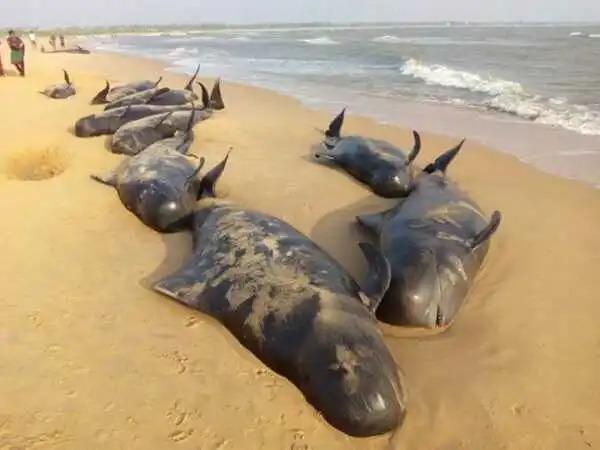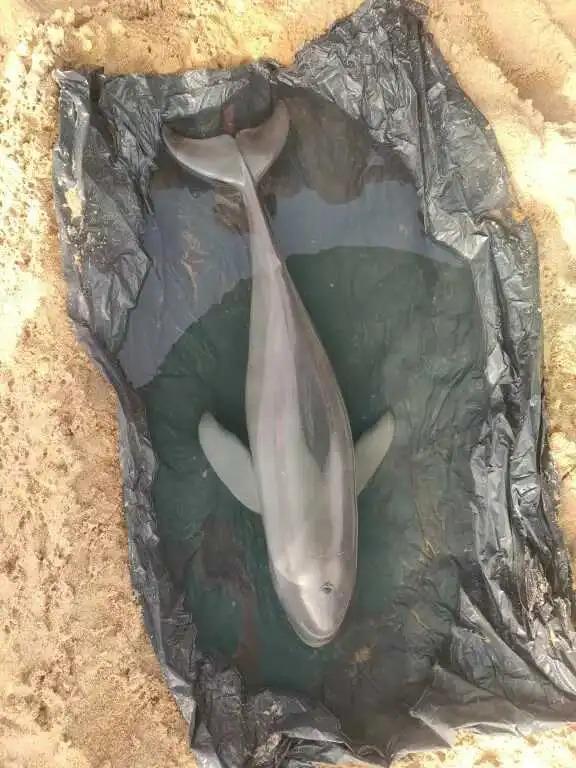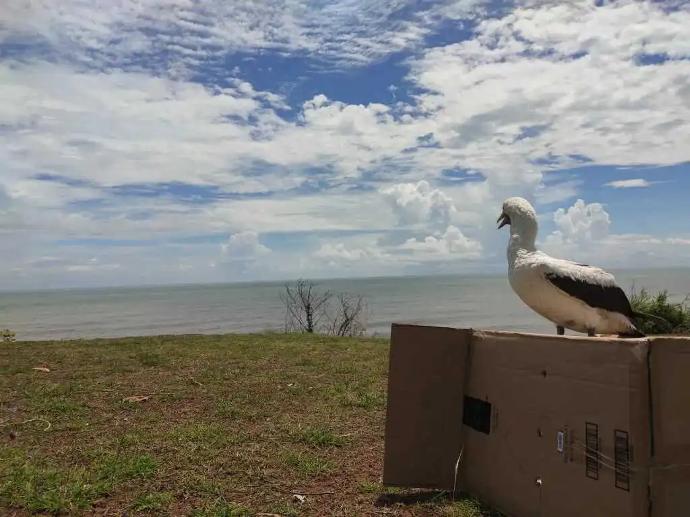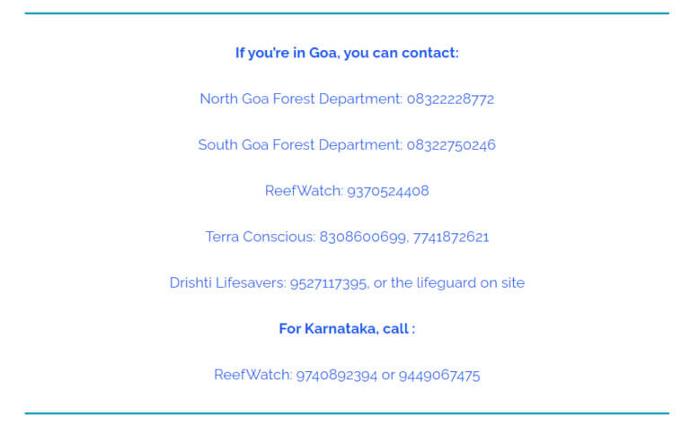
Have you ever come across an animal you never thought you’d see? I don’t mean while on safari somewhere. But when you’re running errands, walking on the beach, or heading out to meet a friend. You sort of stumble across it and, whether it terrifies or fascinates you, it’s an experience that’s bound to stick with you.
A stranded marine animal, dead or alive, evokes strong emotions from all who come across it. It starts with excitement and wonder at being able to see such an elusive animal right in front of you, quickly turning to shared helplessness with the animal, and sadness at not knowing what to do next.
It’s happened before
Given the vast expanse of our country’s coastline, there are innumerable stretches for such incidents to take, a few of which have garnered a fair amount of attention in the media:

A forty-foot blue whale that washed up live in Alibaug back in 2015 attracted huge crowds curious to see the animal in real life. Among the crowd were Good Samaritans trying to push the animal back into the water and others who really just wanted a picture with a whale. It took almost entire day for the animal to succumb to its circumstances, surrounded by the noise and chaos of a curious crowd.
In 2016, 81 short-finned pilot whales washed up in Tuticorin, over half of them already dead and the remaining clinging to life. Again, efforts were made to push the remaining live whales back out into the water. Some of them floated away only to be found dead on a beach further away; what happened to the other remains a mystery, though it’s only natural for us to hope for the best.

In both cases, the chances of survival were most likely slim to none, even if pushed back into the water. However, given the length of India’s coastline and the lack of infrastructure to respond quickly to such cases, attempting to release the animal in deeper waters is sometimes the only option available at the time.
It seems a logical course of action- the animal just needs to be back in its habitat and it’ll be fine, right? Well, I think most vets or biologists would disagree. It’s no secret that these animals are incredibly resilient. Yes, they have evolved incredible adaptations (behavioural and physiological) over millions of years and they have also beat the odds in a world that has changed so drastically due to anthropogenic factors.
Who reports these strandings?
In Goa, a Marine Stranding Network was set up back in 2017 to quantify the number of cetaceans and turtles that were being washed up. Started by Terra Conscious, in collaboration with Drishti Marine Lifeguard Services and the Goa Forest Department, an eyebrow-raising 460 stranded animals have been recorded in the last 4 years. Comparatively, the Karnataka coast has documented 150 such strandings in the last 3 years.

It’s not that the coastal waters of Karnataka are somehow safer. Rather, Goa being such a tourist-centric state has deployed lifeguards over 39 stations along its coast for the safety of its visitors. They have been trained in Stranding Protocols and are usually the first-responders in a situation. If you see one of them on a beach in Goa, be sure to give them a shout out for the good work they’ve been doing!
Comparatively, the capacity to report incidences of stranded animals is just that much higher than in Karnataka.
Why do marine animals strand?
This simple measure of reporting the strandings has allowed researchers to look at trends and possible causes. Some months show higher incidents of dead strandings, while live strandings increase significantly during the monsoon period, particularly at the onset in June.
So the answer may just be.. rough weather?
That’s far too simplistic an answer. Given how evolved and resilient these animals are, surely, most of them would be able to handle a few strong winds and currents. And maybe this was true back before we evolved opposable thumbs. Unfortunately, we have reached a stage of oceanic pollution and exploitation that push these animals well past the threshold of mere survival. It’s a difficult reality to reckon with, but many of the animals that wash up do so because they have serious injuries or diseases that have weakened them to the point where they just aren’t able to fight the pull of the currents.
What we do know is that the need for treatment conducting necropsies and collecting relevant samples has never been more apparent.
ReefWatch In Goa
The ReefWatch Marine Megafauna Veterinary Network in Goa aims to untangle this complicated web of cause and effect, and to provide medical intervention wherever necessary to give the live stranded animals a better chance at making it once back in the water. It was the next logical addition to the already strong foundation of the Marine Stranding Network.
To say we were taken by surprise by our first monsoon would be the understatement of the year. A landslide, a relentless storm, a tsunami and more such analogies would appropriately befit the rush of cases we experienced. A four-member team attempting to cover the 105 km long coastline of Goa was as impressive as it was comical. Still, I think we fared pretty well for ourselves. We tended as many cases as we could and, with the help of other vets and volunteers, were able to handle the situation. Our veterinary protocol evolved as quickly as the cases flew in. It was a steep learning curve and we’re better for it- dare I say, even proud of what we were able to accomplish! Having said that, we do need all the help we can get.

So, what can you do to help?
Remember to SCOPE
Stand back. Stranded animals are particularly susceptible to stress. Crowding around them, even with the best of intentions can severely affect their wellbeing, and your own, since marine animals also carry many diseases. If the animal is already dead, do not touch it. Try to ensure the people around you do the same.
Call the authorities. I cannot state this enough. Notify the forest department in the region. If there’s a big crowd, call the police. Alert a lifeguard or the forest department and keep your distance. Marine megafauna are protected under law and only authorised personnel are permitted to handle them, even if they are dead.
Organise. In the case of dead strandings, take pictures of the animal from both sides, as well as the top, keeping a reference object next to it. A bisleri bottle works great, if you have one.
If the animal is alive and it looks like help a while away, there are a few things you can do to help:
- Ensure that the animal is in the shade and kept cool. Use an umbrella, cloth or tarpaulin to protect it from the harsh rays of the sun. Let the animal remain where it is.
- Spray water over the body of the animal or cover it with a wet cloth to keep it wet and cool. If it’s a dolphin/whale/porpoise, ensure the water does not enter the blow hole, or that the cloth doesn’t cover the blowhole. Remember, they breathe in air and the blowhole is essentially their nostril.

Prepare for the wait. Compassion is an amazing thing to have. The will to help out, to rescue, to protect is something a lot of us can relate to and that is something that should be celebrated. However, we must be careful about being so driven by our own compassion to help an animal in need that we unintentionally cause harm. When caught up in the urgency of the situation, we tend to expect quick resolution. It’s extremely difficult to wait and watch.
We need to understand that travel takes time. Relevant parties need to be allowed to organise themselves and reach the site fully equipped to handle any situation. Be prepared to be in it for the long haul. Patience and understanding are much appreciated. If you’re not able to stay on site for very long, try and recruit someone who will. Be sure to tell them not to handle the animal, and remember to share the relevant contact details of the authorities.
Exhale. Breathe. Once authorities have arrived, your job is done. You’ve done everything you could and, no matter the outcome, you should pat yourself on the back. Strandings can be physically and emotionally exhausting and it’s amazing that you stuck it out. Be happy about the part you played.
We don’t realise how many of marine animals show up where they ordinarily wouldn’t. The sad reality for marine megafauna is that they wash up on our beaches far more often than they should- and many of them go unnoticed.
Whether the situation pans out to be fortunate or tragic (and we sincerely hope it’s fortunate), remember that you’ve witnessed something that not many others have. Allow the experience to change you, and keep that memory close. Our marine life needs you more than you know.

FAQ
We have decided to address a few questions that have never been asked, but absolutely should be answered. Some of them may seem absurd- and they are- although they do come from experiences past. Brace yourselves!
Can I touch the animal?
No. Animals that live in the ocean have their own diseases that may or may not be transmitted to humans, but let’s not find out, okay?
Can I sit on the animal?
No. When a whale or dolphin is out of the water, the pressure on its internal rises. Make sure nobody is touching or handling the animal. Any added pressure will cause immense pain. Also, refer question 1.
Can I take a selfie with the animal?
No. Trust us, we understand the urge. But the simple answer is no. The animals that wash ashore are already extremely stressed out. Having people gather around them for photographs, despite their best intentions is unhelpful and detrimental to the health of the animal.

Should I move the turtle?
No. The internal organs of the turtle are placed right near the bottom of the shell (called the Plastron) and improper handling can cause damage to these organs.
But what if it’s dead?
Still no. Turtles and cetaceans are protected by law. Handling and even touching them isn’t allowed. Also, refer question 1.
Are all turtles found on shore stranded?
No. Nesting turtles may be mistaken for stranded turtles because they tend to move slowly. Wait and watch before determining the animal is, indeed, stranded.